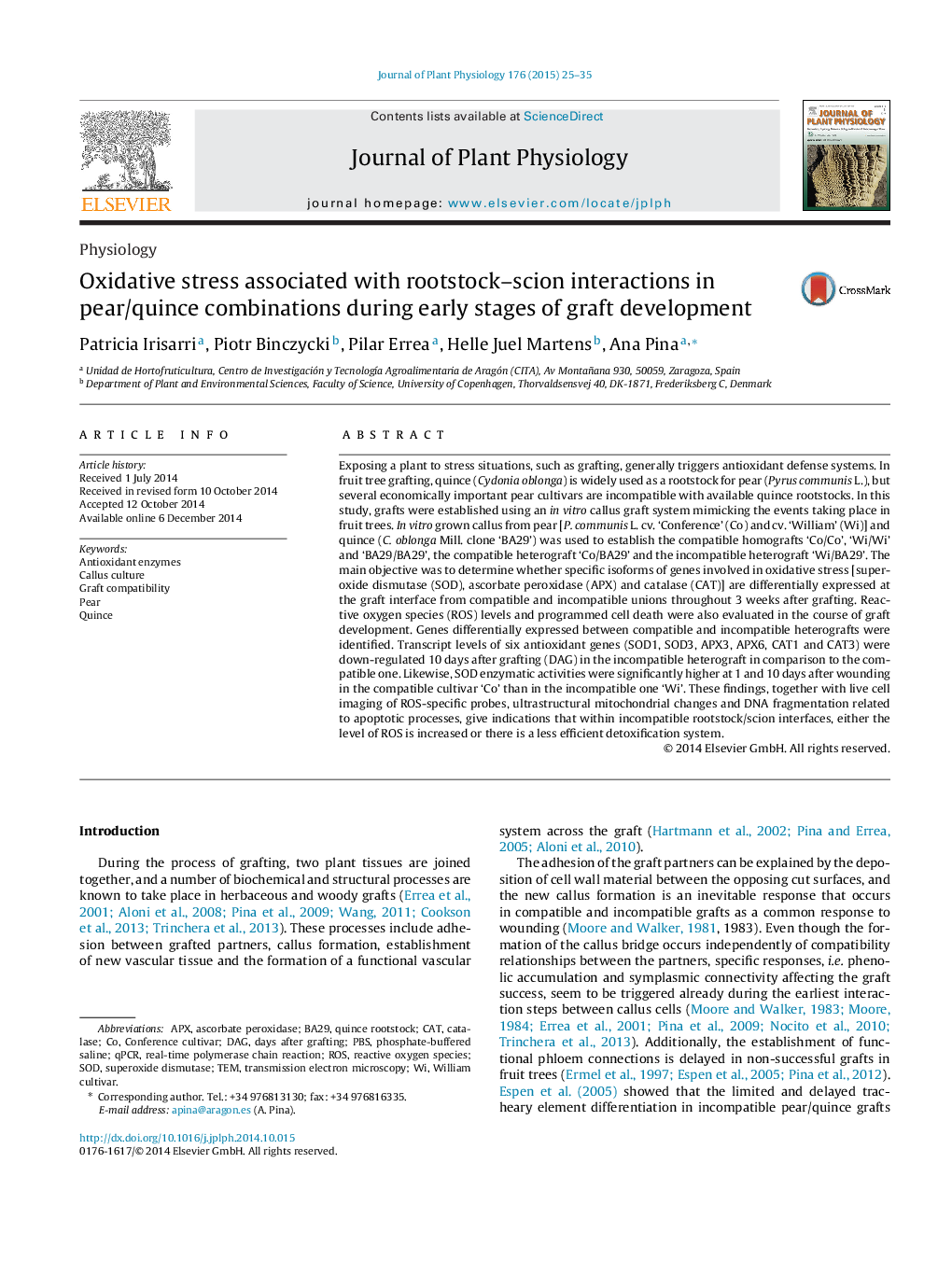| کد مقاله | کد نشریه | سال انتشار | مقاله انگلیسی | نسخه تمام متن |
|---|---|---|---|---|
| 8387488 | 1543900 | 2015 | 11 صفحه PDF | دانلود رایگان |
عنوان انگلیسی مقاله ISI
Oxidative stress associated with rootstock-scion interactions in pear/quince combinations during early stages of graft development
ترجمه فارسی عنوان
استرس اکسیداتیو در ارتباط با متابولیسم پیاز در ترکیبات گلابی و قهوه در مراحل اولیه رشد گاو
دانلود مقاله + سفارش ترجمه
دانلود مقاله ISI انگلیسی
رایگان برای ایرانیان
کلمات کلیدی
PBSqPCRGraft compatibilityAPXCATROS - ROSAntioxidant enzymes - آنزیم های آنتی اکسیدانTem - این استDAG - روزSOD - سدSuperoxide dismutase - سوکسوکس دیسموتازCallus culture - فرهنگ کالوسQuince - قوچPhosphate-buffered saline - محلول نمک فسفات با خاصیت بافریTransmission electron microscopy - میکروسکوپ الکترونی عبوریreal-time polymerase chain reaction - واکنش زنجیره ای پلیمراز واقعی در زمان واقعیascorbate peroxidase - پراکسیداز آسکورباتیCatalase - کاتالازPear - گلابیReactive oxygen species - گونههای فعال اکسیژن
موضوعات مرتبط
علوم زیستی و بیوفناوری
علوم کشاورزی و بیولوژیک
علوم زراعت و اصلاح نباتات
چکیده انگلیسی
Exposing a plant to stress situations, such as grafting, generally triggers antioxidant defense systems. In fruit tree grafting, quince (Cydonia oblonga) is widely used as a rootstock for pear (Pyrus communis L.), but several economically important pear cultivars are incompatible with available quince rootstocks. In this study, grafts were established using an in vitro callus graft system mimicking the events taking place in fruit trees. In vitro grown callus from pear [P. communis L. cv. 'Conference' (Co) and cv. 'William' (Wi)] and quince (C. oblonga Mill. clone 'BA29') was used to establish the compatible homografts 'Co/Co', 'Wi/Wi' and 'BA29/BA29', the compatible heterograft 'Co/BA29' and the incompatible heterograft 'Wi/BA29'. The main objective was to determine whether specific isoforms of genes involved in oxidative stress [superoxide dismutase (SOD), ascorbate peroxidase (APX) and catalase (CAT)] are differentially expressed at the graft interface from compatible and incompatible unions throughout 3 weeks after grafting. Reactive oxygen species (ROS) levels and programmed cell death were also evaluated in the course of graft development. Genes differentially expressed between compatible and incompatible heterografts were identified. Transcript levels of six antioxidant genes (SOD1, SOD3, APX3, APX6, CAT1 and CAT3) were down-regulated 10 days after grafting (DAG) in the incompatible heterograft in comparison to the compatible one. Likewise, SOD enzymatic activities were significantly higher at 1 and 10 days after wounding in the compatible cultivar 'Co' than in the incompatible one 'Wi'. These findings, together with live cell imaging of ROS-specific probes, ultrastructural mitochondrial changes and DNA fragmentation related to apoptotic processes, give indications that within incompatible rootstock/scion interfaces, either the level of ROS is increased or there is a less efficient detoxification system.
ناشر
Database: Elsevier - ScienceDirect (ساینس دایرکت)
Journal: Journal of Plant Physiology - Volume 176, 15 March 2015, Pages 25-35
Journal: Journal of Plant Physiology - Volume 176, 15 March 2015, Pages 25-35
نویسندگان
Patricia Irisarri, Piotr Binczycki, Pilar Errea, Helle Juel Martens, Ana Pina,
